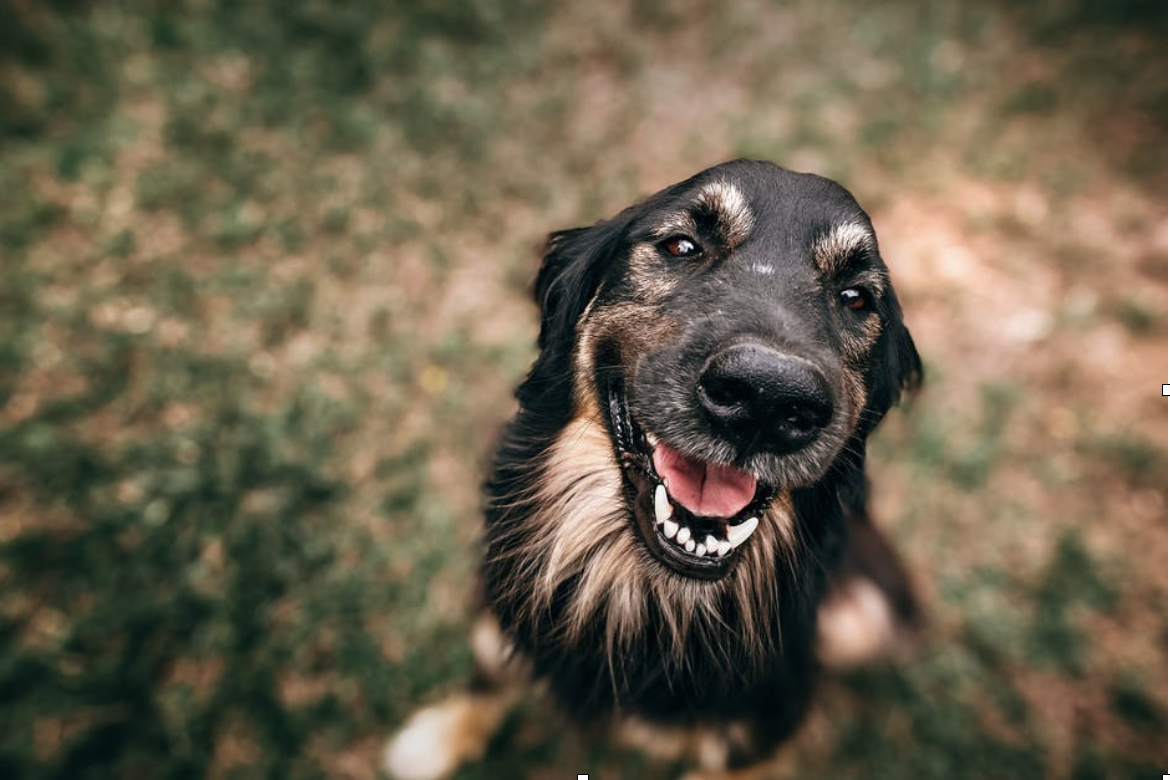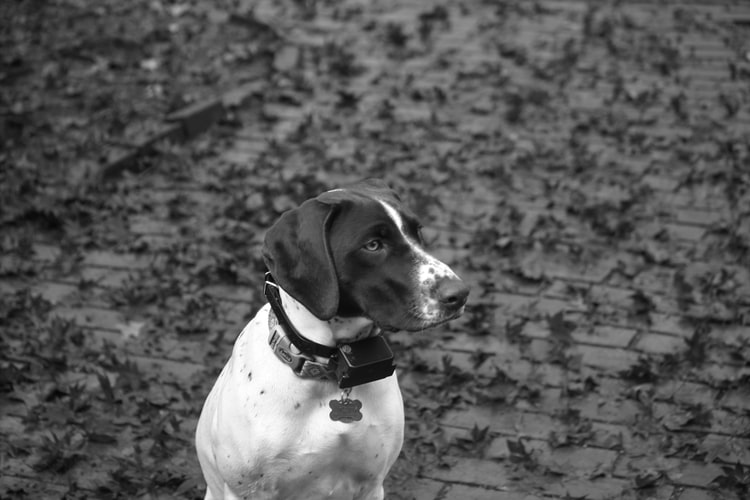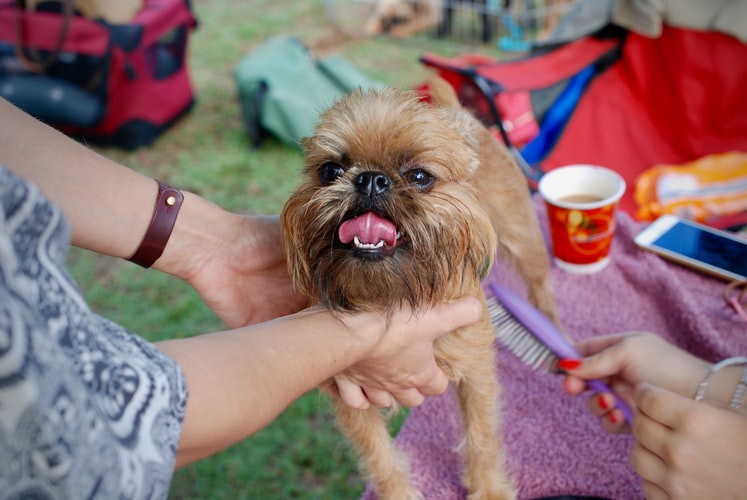Pets
3 Key Ways to Dog Proof Your Home

Are you preparing to bring home a new furry friend? If you’re preparing to welcome a dog into your home, there are some things you will want to do beforehand to ensure that they are kept safe while also limiting the amount of damage done to your home and possessions.
To learn more about some of the best dog-proofing solutions out there, keep reading. In this guide, we will go over some dog safety tips for the home that can help you prepare for a new pet.
1. Baby Proofing Solutions
A great way to think about your home and how you might prepare it for a dog, think about the situation similarly to how you would if you were to babyproof your home, especially if the dog you are bringing home is a puppy. There are many babyproofing solutions that you can use to secure your home. In the early stages of bringing your dog home, you will want to make sure that you limit their access to rooms that you are not in.
Keeping a constant eye on your pup when you are first allowing them to adjust to your home is a good way to monitor them and keep them out of trouble. A great way to block your dog’s access off to certain areas of your home is to use baby gates. You can also use power strip covers and electrical outlet covers to keep your dog safe from these hazards.
2. Limit Saftey Hazards
You can also get a containment station for your power cords to make sure your dog does not have access to them for chewing, which could result in serious injuries. Some dogs are prone to opening doors, drawers, or cabinets, and if this is the case, you can get safety locks for these areas. You can find many of these solutions when looking for home babyproofing products.
If you have other pets, such as a cat, you may want to get a dog proof cat feeder to make sure they aren’t taking all of your cat’s food for themselves which could upset their stomachs.
3. Limit Clutter
The more items that you leave lying around means that there are more items that your dog can attempt to destroy. For this reason, before you bring a dog into the home, it can be helpful to do a deep clean in which you declutter your home while also creating some organizing systems. This will allow you to make a place for everything so that you can make cutting down on clutter a long-term goal that is actually attainable.
This will allow you to keep your items safe while also making sure that you are not leaving hazardous materials out for your dog to ingest.
Dog Proof Your Home: A Simple Guide
Make sure to consider these tips and tricks so that you can dog proof your home before picking up your furry new friend.
Head to the “Pets” section of our site for more advice on this topic.
Pets
How to Help a Dog with Anxiety

Do you have an anxious best friend? Does your buddy bark, whine and panic? You’re not alone! Many dogs experience anxiety, it’s frightening for your dog and can be a worrying time for you. However, we’re about to show you how to calm your dog down, and help your best friend lead a stress free life.
That being said, feeling anxious is a normal and often healthy emotion. If your dog’s anxiety level is too high and left unchecked, it could turn into an anxiety disorder. Such a condition can lead to behavioral issues as well as other problems. Thankfully, you can train your dog to calm down quickly.
What Causes Canine Anxiety?
Many things can cause dog anxiety, but the most common causes seem to be fear, separation and ageing. Keep these things in mind when caring for your anxious dog.
Fear
Things that can cause fear in your dog are loud noises, strange people or animals, visual stimuli such as hats or umbrellas, new or unfamiliar environments as well as specific situations. These situations can include the vet’s office or car rides or even surfaces like grass or wood floors. Some dogs may only have quick reactions to these things, but they can cause real turmoil for more frequently anxious dogs.
Separation
Separation anxiety is estimated to affect around 14% of dogs. Dogs with this condition cannot find comfort when they are left alone or separated from their family. This anxiety often comes out in undesirable behaviors. These negative characteristics include urination and defecation in the home and destroying furniture and furnishings. It may also manifest in barking and whining.
Ageing
This affects older dogs and can be associated with cognitive dysfunction syndrome or CDS. CDS affects memory, learning, perception and awareness. In this way, it is similar to Alzheimer’s disease in humans. This leads to both confusion and anxiety in older dogs.
What Symptoms Should You Look For?
So how can you tell if your dog has anxiety? There are several things you will need to look out for.
- Aggression
- Accidents in the house
- Drooling
- Panting
- Destructive behaviors
- Excessive barking
- Pacing
- Restlessness
- Repetitive or compulsive behaviors
Some of these symptoms may be the result of a rare anxiety-inducing event. Any of these behaviors can become recurrent and result in more serious concerns. By far, the most dangerous symptom is aggression.
It can be targeted directly or indirectly in any given situation. Direct aggression is when your best friend lashes out towards people or other animals. Indirect aggression often occurs when a person comes between the dog and the perpetrator of the aggression, like another animal. The first signs of this are growling and barking.
Accidents in the house are pertaining to urination and defecation. It is a prevalent symptom of separation anxiety, and anxious dogs often get themselves so worked up that they have an accident. This can be frustrating for owners who have worked challengingly housebreaking their beloved companion. It is unpleasant to clean and can lead to things like property damage.
Like accidents, destruction is also widespread with separation anxiety. The damage is most often found near the entryway/exit points like doorways and windows. Dogs in such a state of heightened anxiety are also at risk to themselves. Your best friend may attempt to break out of his crate, windows, or even doors, resulting in severe and painful injuries requiring an expensive vet visit.
How Can You Help?
There are two main things you can do to help your anxious dog. These are prevention first, and if all else fails, treatment. It can be hard to precisely predict what makes your dog nervous and even harder to tell if it will become a severe condition. First, we will discuss prevention and then treatment.
Prevention
You can do things to help train your puppy or adult dog to help with their anxiety early on. These suggestions may solve the problem before it becomes a serious concern. However, if they don’t work or the stress gets worse, it may be time to discuss treatment with your veterinarian.
Body Language
One of the best things you can do to help your dog is reading their body language. Get to know when your pet is uncomfortable or scared. Learning these things can help you avoid negative experiences or use them as a teaching moment. Knowing your dog’s body language will also tell you when they are just beginning to get anxious. This is especially useful when it comes to dogs with aggression-related anxiety.
Socialization
Proper socialization can help prevent anxiety in dogs. Introducing your dog to new people, dogs, animals, places, and experiences early on can help avoid an anxiety response later on. It also helps your best friend become well-adjusted.
Obedience
Obedience training is an essential tool for helping your dog with their anxiety. It helps establish a healthy relationship and establishes trust between the two of you. A well-trained dog is easier to socialize with. We recommend obedience classes as they are an excellent place for dogs to meet other dogs in a safe environment.
Exercise and Nutrition
Regular exercise and stimulation are vital to your best friend’s development, physical and mental health. A well-stimulated companion is less likely to be destructive. Nutrition is equally important to your canine’s health. Making sure your pet is healthy will also help make them happy and can help reduce their stress.
Situation Avoidance
You can also avoid or prevent events that cause your dog’s anxiety, especially if they have been diagnosed with an anxiety disorder. It doesn’t mean you need to put your life on hold, but it can help reduce some of your pet and your’s stress. If you can’t avoid the sources of your dog’s anxiety, then it is best to take preventative measures such as leashes, harnesses and, if needed, basket muzzles. Know your best friend’s triggers. You can prepare for these situations in advance.
Treatment
If treatment is needed, then it is best to talk to your veterinarian. They will be able to help identify exactly what is causing your best friend to be anxious. They will also be able to discern if your buddy’s anxiety is situational or a more severe issue. If the concern is extreme, medication may be necessary. Always talk to your vet before giving any kind of medicine to your pet.
Training and Conditioning
You can use training and conditioning to help your anxious best friend. The purpose of this is to curb your pet’s response by replacing the anxious or aggressive behavior with something more desirable, such as sitting or paying attention to their owner.
You can also try exposure therapy as a form of training with your canine. This is the process of slowly introducing your dog to what is causing their anxiety. Do this in short periods at a decreased intensity. Reward your bud for positive behavior and repeated exposure. Through these methods, your dog’s fear may lessen.
Anxiety Meds for Dogs
If your friend is struggling, your vet may recommend medications such as an SSRI or antidepressant. For more predictable events, they may recommend a benzodiazepine and an antidepressant to help your dog in particular times of stress.
In Conclusion:
Anxiety for your best friend may be more stressful than you think. It can come on suddenly and in various ways and even turn into a more severe condition. However, with the proper training, techniques and possibly meds, your best friend can get back to being their happy and calmer selves.
Healthy Pets
How often do you walk your dog

Nowadays, walking your dog is the most natural thing in the world. Yet this is something of the past decades, when the dog became our family friend.
Where does our outlet habit come from?
How often should you actually walk a dog?
And what rules apply for this?
In this article we will give you all the information about walking your four-legged friend.
Why walk your dog?
Walking your dog seems like an all-time habit. You will think. Doesn’t he just have to pee and defecate? And how else does he get enough exercise?
But many of our dogs were bred many years ago for some task in our society. No matter how early!
First we had wolves and wolfdogs to hunt with. Later we had canids as guards, keepers and even pack animals.
Enough to do, for the dog of the past! And peeing and pooping, they did that in between somewhere in a bush or corner. Nobody cared about that.
But today most of the dog’s tasks have been taken over by machines and other modern developments. This left only the luxury position of pet for our four-legged friend.
Now, of course, there are dogs with tasks. Think of guide dogs, police dogs and of course the house and yard guards. Yet these are also held differently than in the past.
Just walking out the door for a visit to the toilet or a round about is no longer possible in our busy, modern society. So we let our dogs out.
How often should you walk a dog?
We usually walk our dog so he can go to the bathroom and get plenty of physical exercise.
Nowadays we see that dogs are often taken out three times a day. Early in the morning, noon and late at night. This is on average every 6 to 8 hours.
But consider that you can only pee or defecate once every 8 hours. And only has a few minutes to do so.
Of course your dog will get used to a certain walking rhythm. But that does not have to mean that urinating once every 8 hours is enough.
Especially for dogs that are not allowed to pee in the garden, making a pee and poo round once every 4 to 6 hours is a nice habit.
Holding stools for a long time can cause health problems. From bladder stones to nasty infections.
How much exercise does my dog need?
In addition, every dog needs sufficient exercise for a good condition and health. However, this differs per breed.
For example, walking for an hour makes a Chihuahua completely tired, but a Border Collie is far from wanting to go home.
Therefore, read carefully about the specific breed needs and observe your dog.
Appropriate movement also has to do with the condition of the body. Is your dog sick , old, pregnant or is he still a puppy? Then of course other rules apply.
These individuals can take it easy, and at temperatures above 20 ° C . For polar dogs, a temperature limit of 15 ° C even applies!
The type of exercise must also suit your dog.
Does your dog have an increased risk of hip or elbow dysplasia ? Climbing stairs, slippery floors, wild games with sharp curves and hard stopping times are not recommended.
But walking or swimming is ideal for these dogs !
Where can you walk a dog?
Have you figured out what to do with your dog? Always keep to the rules of the environment.
In all municipalities in the Netherlands, the dog must be on a leash in built-up areas. There is only an exception to this when you enter an area with the official signs “dog play area” or “loose run area”.
Outside the built-up area, dogs are often allowed to run free, but always keep to the signs of the municipality.
Read the given information carefully. Sometimes running free is only allowed at specific times or during special months of the year.
An example of this is the beach. Here dogs are often allowed between October 1 and May 1 loosening freely .
However, between May 1 and October 1, the busier summer months start with many visitors. Then adjusted times apply for running free.
Dogs are not allowed at all in some areas. This is indicated by means of a prohibition sign.
Another special situation takes place in natural areas. To protect wildlife in nature, dogs often need to be on a leash here. Sometimes they are not even welcome at all.
When entering these areas, the four-legged friend must be kept under control by the owner at all times.
The game can be hunted and cause serious accidents. The breeding area of certain birds and shelters for animals such as foxes, badgers and rabbits can also be disturbed in such a way that this has a detrimental effect on the natural population.
Is your dog going after game after all? Or can you not prove that he is perfectly under appeal? Then it can be concluded that you are present in the nature reserve with an ‘unauthorized hunting tool’. This is punishable.
For this reason, it is always advised to keep wind and hunting dogs on a leash in a natural area, to avoid unpleasant situations.
Dog Breeds
The Brussels Griffon An adorable breed.

Intelligent, affectionate, loyal, curious … These are just some of the virtues that the Griffon of Brussels gives us. Definitely, this breed falls in love.
About ten years ago, seeing an Ewok walking by my side was the strangest thing.
I remember the people who were walking down the street at that time, stopping and hearing the children exclaim: Look, Dad! That dog has a beard !!
Fortunately, every day the Brussels Griffon is better known in Spain. An example of this is that a chain of stores in Spain has made a television spot in which a griffon appeared waiting in the arms of its owner, while the Star Wars soundtrack was playing off.
The Brussels Griffon is a small breed dog that usually weighs about 3 to 6 kg and, yes, it does look a lot like the Ewoks that appear in the Star Wars movie.
To find out more about its history: its origins date back to the 19th century in Belgium. These dogs were used to scare away rats that roamed in stables in Europe. In addition, they helped guard the house and kept its owners company.
This breed usually attracts a lot of attention for its monkey face. They have a very peculiar little face, with a flat nose (they are brachycephalic), ears attentive to everything and round little eyes that speak to us.
There are three varieties depending on the type of hair the specimen has: The Brussels Griffon, which has long, hard and red hair; the Belgian Griffon, with long, hard, black hair and, finally, the Petit Brabançon with short, reddish hair.
Obviously, the one that gives the least hairdressing work is the Petite Brabançon, for having short hair. On the contrary, the Brussels griffon and the Belgian griffon have to have their hair worked every few days using the stripping technique.
According to the FCI standard, the head must be large, broad and round, with a very short muzzle, a very marked stop and a black nose. The eyes are large, round and dark. Small ears are rewarded. The tail should not curl up, it should be set high and generally carried raised. Griffons have a prominent lower jaw (prognathism), but they should never show their teeth or tongue when they have their mouths closed, as this is considered a breed defect.
This breed has some care that should be noted. We must take good care of our eyes . As they are quite bulging, they are very prone to ulcers, so we must carefully monitor the ocular structure and check that they do not have transparent white spots, which can be a symptom of an ulcer. If our griffon suffers from an ulcer, it is very important to go to the vet as soon as possible so that it does not deepen, reaches the cornea and the damage caused may be greater.
Also, we must ensure that hairs are not accidentally introduced into the eye, since permanent contact can damage the eye cells and lead to keratitis or distichiasis (abnormal birth outside the usual lash line and rubbing them with the cornea).
Another important aspect to note is that the Brussels Griffon is quite delicate when it comes to heat stroke. Like all brachycephalic breeds, we must pay special attention in summer so that our pet does not suffer the dreaded heat stroke.
Regarding their character, it is important to note that they tend to suffer from separation anxiety, so those who are considering having a griffon should make sure that they are not going to leave their pet alone for a long time. They love company and pampering. Sometimes they can be fearful in front of young children. This, as always, will depend on how we train our dog. They can be scared by the noises, unexpected movements and games that they give them, but they are very good with them and, at most, what they will do is run to the opposite side. They have a very faithful character, they will not separate from you for a single minute. They will be your shadow.
-

 Social Media10 months ago
Social Media10 months agoWho is Rouba Saadeh?
-

 Apps10 months ago
Apps10 months agoWhy is Everyone Talking About Hindi Keyboards?
-

 Social Media10 months ago
Social Media10 months agoMati Marroni Instagram Wiki (Model’s Age, Net Worth, Body Measurements, Marriage)
-

 Entertainment10 months ago
Entertainment10 months ago12 Online Streaming Sites that Serve as Best Alternatives to CouchTuner
-

 Apps10 months ago
Apps10 months agoThings you need to know about Marathi keyboard today
-

 Apps10 months ago
Apps10 months agoStuck with Your default Bangla keyboard? Isn’t it time for a change?
-

 Entertainment10 months ago
Entertainment10 months agoMovierulz Website: Movierulzz 2021 Latest Movies on Movierulz.com
-

 Social Media10 months ago
Social Media10 months agoBrooke Daniells: Everything About Catherine Bell’s Partner
